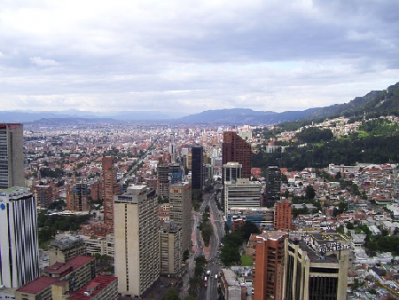Country Profile: Colombia
Colombian trade body targets international partnership to grow cosmetics industry

On a recent trip to Bogota to investigate what is happening in the country, Cosmetics Design spoke to Juan Carlos Jimenez Castro, director of Cosmetics Chamber for the National Business Association of Colombia (ANDI) to find out about the steps his organization is taking to develop the industry further.
“Basically my job is to represent cosmetics companies in an effort to promote the sector, both nationally and internationally. Of equal importance, it is also my responsibility to represent the sector when it comes to new regulations, to ensure that they are clearly understood and do not impede progress,” said Jimenez.
ANDI is an independent organization that works with other government bodies and agencies, including Invest In Bogota and Programa de Transformación Productiva and represents 56 fee-paying companies – half of which are international.
National, regional and international ambitions
“On a national level, our focus is to insure that regional and international regulations are clearly understood, while we also work to promote the internationalization of the sector. This means we represent the industry by working with international trade bodies, including Cosmetics Europe, the PCPC in the US and the South American trade association CASIC.”
So far the industry has developed mainly off the back of international investment from the major global players, with names such as Natura, Avon, Belcorp, Procter & Gamble, Unilever and L’Oreal carving out a 70% share in the market for foreign businesses.
Although most of these players are using their operations in Colombia as a regional hub to serve the Latin American market, the plan is to place more of an emphasis on the development of domestic players as key players in the supply chain.
“Because we work with the ministry of trade we have seen a big advantage of being able to work with raw material and ingredients that are sourced from the highly diverse native Colombian eco system. Many of these materials have incredible active properties, and are especially rich in antioxidants for skin care products. There are many species that have high levels of antioxidants and minerals that can be put to good use in cosmetics.”
Representing multinationals and domestic players
But the association has also been representing big multinationals in the supply chain, including Merck and BASF. Indeed, one of the aims is to secure investment from these bigger raw materials and ingredients players and invest in research and development facilities that can be well placed to take advantage of the country's diverse eco system.
“We also want to support smaller domestic companies that want to expand into export markets and we already have a number of ingredients players that have showcased their products and are now expanding regionally as a result of that work.
“In Europe and the US, there is enormous potential, but getting business partners and establishing the technical requirements for trading in those markets can be very challenging. This is why we are currently working with the Swiss embassy to establish what are the technical requirements for cosmetics and personal care laboratories in Colombia and ultimately to enable them to do business in markets like the EU and the US.”
Making access to Colombian biodiversity easier
In line with recent regulatory updates by the Brazil government to help promote the sustainable research and development of plant materials in the Brazilian Amazon, the Colombian government is also working towards the introduction of similar regulations in the country.
“This means that the ministry for environment is regulating the access to genetic and biological material because some companies have identified the potential for a number of plant species and materials that could be of value as cosmetic ingredients,” said Jiminez.
"The aim of this is to encourage both Colombian and international companies to explore and promote the sourcing of raw materials and ingredients in the country.”
Success stories so far…
So far the efforts by ANDI and the other bodies has given way to a number of success stories for Colombian cosmetics players that are now starting to shine on the international arena, albeit from small operations.
Those companies include finished goods players Waliwa, which sources its own ingredients in the country, as well as Kahai, which showcased its line of products at this year’s Cosmprof in Bologna featuring ingredients based on the Amazonian Cacay tree, also sourced in Colombia.
The example of these two success stories maps the future for the Colombian industry, promoting strong natural cosmetics brands made with locally sourced ingredients. Ultimately it is the proliferation of players like this that could serve to grow the industry considerably in the future.
“We want to become a major producer of cosmetics in the region based on natural ingredients sourced from the country and to ultimately achieve a total market value of of $8 – 9 billion a year by 2030, compared to around a figure of around $4bn now,” said Jiminez.









